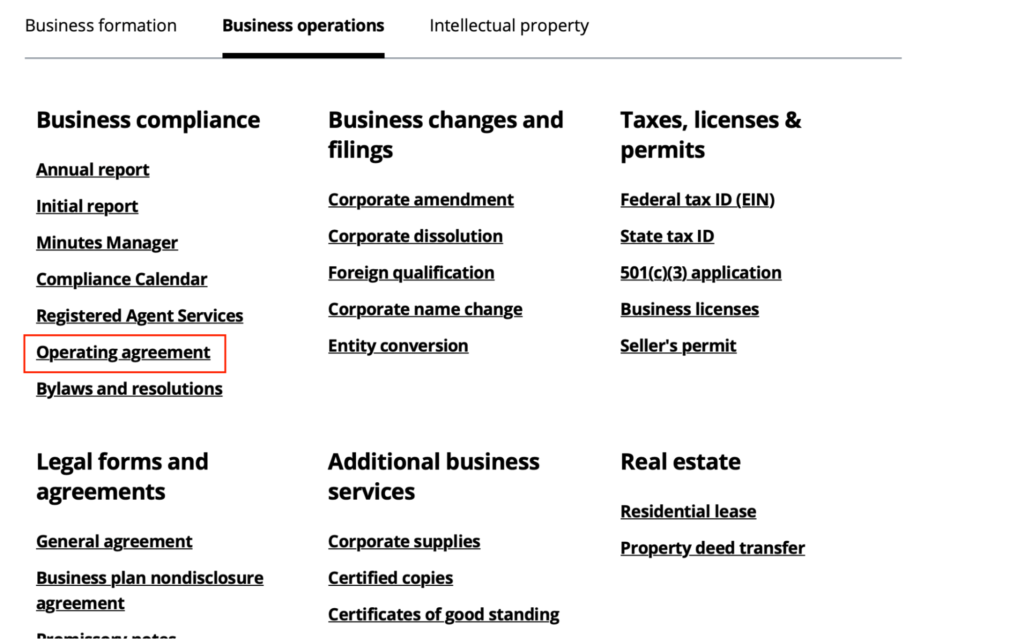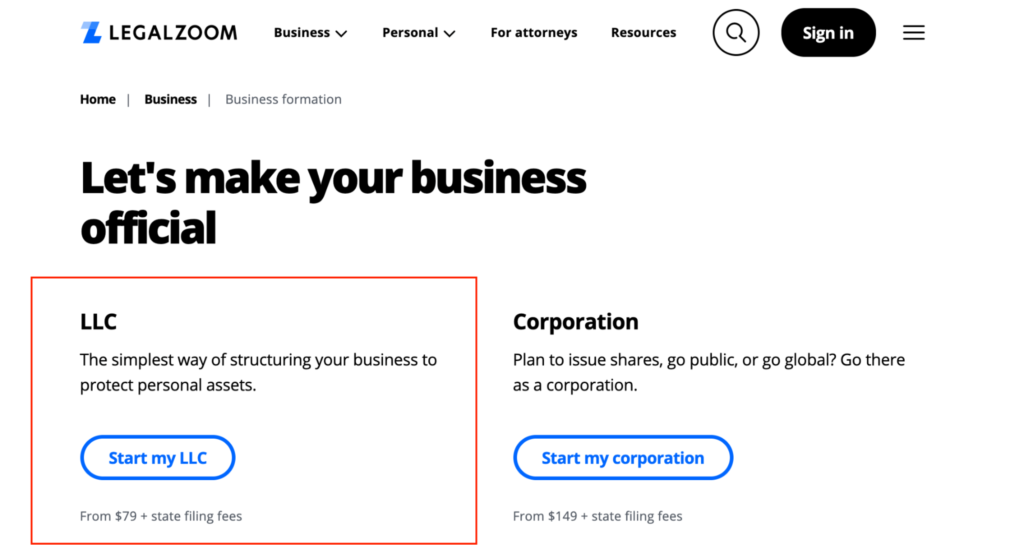Disclosure: This content is reader-supported, which means if you click on some of our links that we may earn a commission.
An operating agreement is an important document used by limited liability corporations (LLCs) to set rules and guidelines for a business and its members. It might seem a little challenging at first, especially with multiple partner LLCs, but it’s actually pretty simple. And once you’ve set it up, it’s a fluid document that you can amend in the future as your business grows and changes.
Why Creating an Operating Agreement is Worth It
Operating agreements aren’t always legally required, but they’re still worth having. They establish the rules and guidelines for a business while separating personal liability from business liability. This is equally important for single LLCs as it is for multi-partner LLCs.
Your operating agreement also exists to protect you from legal issues that could arise. These include member disputes, court cases, and investor disputes. Having an operating agreement avoids misunderstandings and shows courts that you started your business with a clear plan and followed regulations.
Another thing that makes operating agreements so valuable is that they can help when you scale your business. If you decide to bring on new members, work with investors, or go public, this document will be hugely important.
The best part about creating an operating agreement is that once it’s done, it’s done. All you need to do after that is update it with any changes. Once you’ve created it, you have a document you can fall back on to revise and amend.
The Investment Needed to Create an Operating Agreement
When you create an operating guide, you have a few options to finance it.
You can opt for a template that you fill out yourself and update when there are business changes. If you’re the sole owner and your business is relatively simple, this is a free option that can work.
If you have a multi-partner LLC, you may want to consider working directly with a lawyer. This is a much more expensive option, but it will help you navigate the complications of multiple partners or investors. You should look for a local lawyer to ensure they’re knowledgeable about your state’s regulations.
Your third option is to work with a business formation service. Formation services help you form an LLC, register it, and fill out all the required paperwork—including your operating agreement. This is a good option for saving both time and money.
There are plenty of great formation services to choose from, but LegalZoom is the most popular. It offers a range of services, including creating operating agreements, dissolution, and LLC formation:

5 Steps to Create an Operating Agreement
Below is a step-by-step guide to building your operating agreement from scratch.
#1 – Form Your LLC
The first thing you’ll need to do is form your LLC (if you’ve already done this, head on to step 2!) Operating agreements only work for LLCs and, to fill in all the correct details for your operating agreement, you’ll need to have your LLC formed and organized.
Getting all the details decided before you start working on your operating agreement can save you a lot of time.
There are two main ways that you can go about creating your LLC:
- Use a lawyer. If you want, you can work directly with a business attorney to help you set up your LLC. This is a great way to save yourself time and be sure that you’re doing everything correctly. You should always look for a local attorney to make sure they know about the specific regulations in your state.
- Use a business formation service. If you want to make forming your LLC easier (and cheaper) you can opt to go through a business formation service. These services help you with all the admin like accounting, registering, and paperwork.
In terms of the latter option, LegalZoom can help you create an operating agreement, but it can also help you with the formation of your LLC. They offer LLC formation, both for single LLCs and multi-partner LLCs.
Not only do they help you through the process of forming your LLC, but they also help you choose the right type of taxes, as well as steering you clear of any legal issues. And, of course, you get a registered agent who can help you navigate operating agreements.
The cost of forming an LLC with them starts at $79 and you have 60 days to get a refund if you’re unsatisfied.
Business formation services are a great option for those who want to save money while still doing everything the right way and having expert support throughout the process.

#2 – Follow State Requirements
For most places, an operating agreement isn’t required by law. But it’s still an important document for you to have for yourself.
However, some governments do require you to have an operating agreement. For instance, in the US, five states require operating agreements and have specific conditions for those. They are New York, California, Maine, Delaware, and Missouri.
If your state does require one, don’t worry. It could make your life a lot easier, as there will be clear instructions on what you need to include and how to fill it out.
Here’s how you can make sure you’re following local regulations:
- Check your local government website. If your state or government does require an operating agreement, chances are that the information will be listed on their website. This might include a template, what you need to fill in, and how to send it in and file it.
- Hire a local lawyer. If you’re not sure about the local requirements, or you’re worried about getting something wrong, contact a local business attorney. They’ll be able to help you fill out all the correct information, understand the legislation, and file it correctly.
- Use a business formation service. If you go through a business formation service, like LegalZoom, they’ll be able to explain different state regulations to you and advise you about any upcoming changes to federal policies.
#3 – Define the Basic Provisions
Whether or not your government requires an operating agreement, you need an operating agreement that details the basic information about your business.
If you’re a single LLC, this should be quick and easy. If you’re a multi-partner LLC, you’ll need to schedule a meeting to discuss the following points and make sure that everyone agrees to the information you’ll be recording in your agreement.
You’ll first need to fill in your basic company details. This should be easy regardless of whether or not you’re a single LLC or multi-partner. The kind of details you’ll include are:
- Business name
- Business address
- Business purpose
- Members (names and addresses)
- Register agents
Don’t worry about getting too detailed with your business purpose—it’s just to explain what the company does, rather than a mission statement or anything.
You also need to define how the business will be taxed on your operation form. This is equally as important for single and multi-partner LLCs.
For single-member LLCs, you should define whether you’ll be taxed as an individual or a business. It may be better to opt for business, as your operating agreement and LLC exist partly to separate you as an individual from you as a company.
If you’re a multi-partner LLC, you need to make sure all the members agree on the taxation terms.
Last, you’ll need to set out terms for how the business will be dissolved and liquidated.
Your terms might include who and what has the power to trigger a dissolution, and who can decide when to dissolve it. You’ll also need to look at how the assets will be shared out upon liquidation.
#4 – Define Member Guidelines
If you have a multi-partner LLC, it’s important to lay down guidelines about member finances, management, and withdrawal.
This keeps everyone on the same page and avoids disputes down the line. If you’re a single LLC, you can still add this section to your operating agreement, but it will take you less time, and you won’t need all the clauses.
For a multi-partner LLC, you’ll need to make sure all the members are clear and agree on each of the following clauses:
The first thing you’ll need to document is everyone’s contributions. List everything each member has contributed, including cash, services, and property.
This is important because it’s one of the most likely things to come up again in the future. You’ll need this information if a member decides to leave, if the company is being liquidated, or if you’re considering going public at any point.
You’ll also need to define how you’ll distribute the business profits.This is usually done based on the contributions or percentages, but it’s important to have this in writing before the business starts making money. This isn’t a topic you want to have any confusion on down the line.
You need to document the percentage of ownership each member has. If you’re a single LLC, you’ll be the sole owner when first writing your operating agreement.
If you’re a multi-partner LLC, then each member will have a percentage of ownership that will dictate profit and shares in the future. This is usually based on what they’ve contributed in terms of capital, or services towards the business.
Next, determine the management structure. LLCs are usually either member-managed or manager-managed. You’ll need to document which of these your LLC will follow and if you’re appointing managers, how much they’ll be paid.
You’ll also need to clearly define the roles and responsibilities of each member, and any managers that will be hired.
After that, determine formal procedure for adding new members in the future. This could include the process for onboarding, rules that must be followed, or any grounds for immediate dismissal.
You need to document how decisions will be made in your LLC, through codifying meeting procedures.This includes:
- Voting rules
- How the votes are weighed (ownership, percentage, etc)
- Veto possibilities
- Action requirement (unanimous, majority rule, etc)
You’ll also need to be clear about who has a say in each decision. This might mean that for big decisions, like making investments, everyone has to agree.
Last, you should decide what will happen should a member choose to leave, or, in the worst case, die.
You’ll need to clearly define what will happen to their ownership and interests and whether members who leave voluntarily have to offer first right of refusal to other members. If a member dies, you’ll need to document how their interest will be paid out to other members or their families.
#5 – Finalize the Operating Agreement
Once you’ve followed the above steps and all the members have agreed on everything, you can finalize your operating agreement.
In most cases, this will remain an internal document for your reference.
Here are the last few steps you’ll need to take to file it correctly and make it official:
- Sign it – Once everything is correct and agreed upon, all the members need to sign. If you’re a single LLC, you still need to add your signature. You should also have an attorney or a registered agent witness this and read over the document to make sure there are no discrepancies.
- File it with the state – If you live in a locality or a state that requires you to have an operating agreement, this is the point where you send a copy through to them. You can ask your registered agent, formation service, or an attorney to help you with this.
- File it internally – Even if you live in a state that doesn’t require an operating agreement, it’s still really important to make copies, and file them in a safe, preferably digital, place.
The point of an operating agreement is that it’s a fluid document that can be amended over time. You’ll need to have copies available to change in the future, show to investors, or possibly provide to courts.
In a multi-partner LLC, it’s also best practice for each member to have their own copy.
Operating agreements are the most exciting part of starting a business, but they keep you organized and avoid communication issues between members. Once it’s finished, you can amend your operating agreement with any changes to details or policies. Remember, it’s a fluid document.
Once you’re finished, you can move onto other, more exciting parts of growing a business. If you’re ready to start marketing your company, check out our guide on branding. Or, learn more about how the right content marketing strategy could skyrocket your business here.














